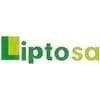
Content sponsored by:
LIPTOSA
Nutraceutical to ensure Animal Welfare and Stress Control
Published: October 7, 2020
Source : José Ignacio Alonso, Veterinarian, Liptosa

The greater intensification of animal production cannot neglect the welfare and the correct conditions of animal housing and management. The European Union (EU) has established a wide range of legislative provisions that guarantee this condition and more and more countries share this concern. In the short term, legislative guidelines may seem like an unnecessary cost, but considering that a stressed animal will not be able to express its full productive potential, it should be considered as an investment.
We should continue improving our knowledge of the needs of production animals to ensure that they reach the highest productivity in accordance with their genetic potential. For this reason, from Liptosa S.A. we believe in the need to identify the consequences of stress in the animals and to provide a natural solution to this challenge.
Stress is a reflex reaction expressed by an animal's inability to cope with its environment, which can trigger many undesirable consequences, ranging from discomfort to death. It involves biological and behavioural responses to a wide range of abiotic stressors which can be either originated within an individual (endogenous) or coming from the environment (exogenous). Therefore, there will be an alteration of biological functions and the development of pathologies that will have a direct impact on productive performance.
Impact and Stress factors on Livestock Animals
Animals are naturally in a state of continuous alert reacting to any kind of external stimuli. In production animals, stressors can be divided into physical factors (diseases, ventilation, high temperatures), social factors (animal isolation, food competition, hierarchical ranking, etc.) and related management practices (lack of water, poor food distribution, transportation, etc.).
Stressors have a cumulative effect and the greater the number of factors, the greater the problem of maladaptation.
Stressors have a cumulative effect and the greater the number of factors, the greater the problem of maladaptation.
The stress response includes several changes that may have negative impact on growth, production, animal reproduction and disease susceptibility (immunosuppression).
Liptotran as a tool to ensure Animal Welfare and Stress Control
LIPTOTRAN is a nutraceutical product that combines plants, plant extracts and chelated minerals, which has a relaxing effect on the animals, enhancing their defence mechanisms against stress caused by physical and social stressors, keeping the animals calmer and in better condition.
Liptotran achieves a double beneficial effect: a tranquilizer and a growth promoter. It is indicated in cases of undesirable behaviour such as cannibalism, aggressiveness, mounts, and periods of stress related to sudden changes in temperature, transport or regrouping of batches.
Thanks to its components, LIPTOTRAN helps to achieve optimal growth, facilitates the handling of animals, and minimizes productive losses.
Uses and Recommendations
Livestock productive cycle involves breeding, rearing, transport, and slaughter; but depending on the species, there are different critical stages to which we must pay greater attention and avoid those stressful factors that affect both health and productive performance.
In poultry farming, Liptotran is recommended for a better adaptation to laying houses (pre-laying and layer I diets) as well as to reduce pecking and cannibalism, since quiet and less active animals will show a productive improvement.
Swine’s aggressive behaviour and cannibalism are well known, so Liptotran is recommended in pregnant sows, to reduce early abortions due to trauma, and in batch regroupings or in transition period in piglets and when entering the fattening stage. This way we will prevent biting and regulate feeding competence. Likewise, Liptotran is also an interesting product to use in prolonged transports for example of breeding animals.
Since ruminants have less aggressive behaviours, we recommend their use at the entrance to the fattening lot to prevent undesired mounts, and at the end of fattening to improve zootechnical parameters.
LIPTOTRAN, thanks to its plant-based composition, helps to minimize stress without reducing feed intake, consequently, it becomes a tool of great interest to improve the welfare of our animals and the profitability of productions.
*Certain information associated with products, their composition and claims may be different depending on the geographical region and may not be applicable in all countries. Liptosa reserves the right to adapt to the requirements and legislation in each case.
The information and technical recommendations provided herein are based on Liptosa's current knowledge and experience.
Liptosa reserves the right to update the information and arguments contained in this platform, as well as to make any changes to this information or recommendation at any time, without prior or subsequent notice.
Related topics:
Mentioned in this news release:
Influencers who recommended :
Tahir Naseem, Ana GavrauRecommend
Comment
Share
Soavet
25 de diciembre de 2020
In summary this product seem to be more appropriate in controlling social vices in Animals
Do you have some experimental trials or field trials to share on this product?
I See need to evaluate this product in multi stressors environment like the humid tropical climate like in South Sahara Africa
LIFA can take up such responsibilities in this region,abd for more about LIFA please follow our activities on https://blog.lifango.org or contact us on lifango48@gmail.com
Recommend
Reply

8 de octubre de 2020
Jose Ignacio Alonso Rojas, the product in question seems to contain various substances with diverse active ingredients that act interactively, attenuating the negative effects of different extruding agents on the animals' performance. In the specific case of broilers, it would have some information about the effect of this product on the production of corticosterone, which, due to the increase due to high temperature stress, constitutes one of the main factors responsible for the reduction in the performance of the birds.
Recommend
Reply

19 de febrero de 2024
Nutrition plays a pivotal role in maintaining the health of pullets, quality egg production by laying hens and body growth of broilers. Nutraceuticals are the nutrients or constituents of animal diet that have nutritional and pharmaceutical importance by preventing various diseases, possessing immunomodulatory potential, providing health benefits and consequently increasing productivity. Nutraceuticals have been in focus in poultry science quite recently due to the nutritional and healthier properties of feed ingredients.
The involvement of nutraceuticals in improving intestinal morphology and nutrient absorption may also encourage the nutritionists to include these compounds in the diet to promote the growth performance of birds.
The Importance of Early Chick Nutrition:-
1. After hatch, chicks have an anatomically complete but physiologically weak GIT resulting in inefficient feed utilization and an unstable microflora.
2. The post-hatch period is critical in bird life because the digestive system is activating itself which hampers the digestion & absorption of nutrients.
3. Early chick feeding with highly digestible proteins/peptides is known to have a positive correlation in achieving higher body weight in the initial weeks, leading to a carryover effect at the time of slaughter.
Importance of Bioactive Peptides for Optimal Amino Utilization :-
1. Bioactive Protein Peptide System (BPPS Forte) comprises of polypeptides produced by fermentation technology involving selective hydrolysis of proteins at specific locations with the help of microbial enzymes.
2. Bioactive peptides possess higher bioavailability leading to rapid absorption in the bird's system thereby bringing wide range of physiological functions.
3. The bioactive peptides are fragments of amino acid sequence in a protein that confer biological functions beyond their nutritional value & its inclusion in early phase of bird life elicit performance significantly.
The involvement of nutraceuticals in improving intestinal morphology and nutrient absorption may also encourage the nutritionists to include these compounds in the diet to promote the growth performance of birds.
The Importance of Early Chick Nutrition:-
1. After hatch, chicks have an anatomically complete but physiologically weak GIT resulting in inefficient feed utilization and an unstable microflora.
2. The post-hatch period is critical in bird life because the digestive system is activating itself which hampers the digestion & absorption of nutrients.
3. Early chick feeding with highly digestible proteins/peptides is known to have a positive correlation in achieving higher body weight in the initial weeks, leading to a carryover effect at the time of slaughter.
Importance of Bioactive Peptides for Optimal Amino Utilization :-
1. Bioactive Protein Peptide System (BPPS Forte) comprises of polypeptides produced by fermentation technology involving selective hydrolysis of proteins at specific locations with the help of microbial enzymes.
2. Bioactive peptides possess higher bioavailability leading to rapid absorption in the bird's system thereby bringing wide range of physiological functions.
3. The bioactive peptides are fragments of amino acid sequence in a protein that confer biological functions beyond their nutritional value & its inclusion in early phase of bird life elicit performance significantly.
Recommend
Reply


Liptotran L
LIPTOTRAN is a nutraceutical product that combines plants, plant extracts and chelated minerals, which enhance in animals their defence mechanisms against s
Suggested link
Recommend
Reply

Would you like to discuss another topic? Create a new post to engage with experts in the community.







